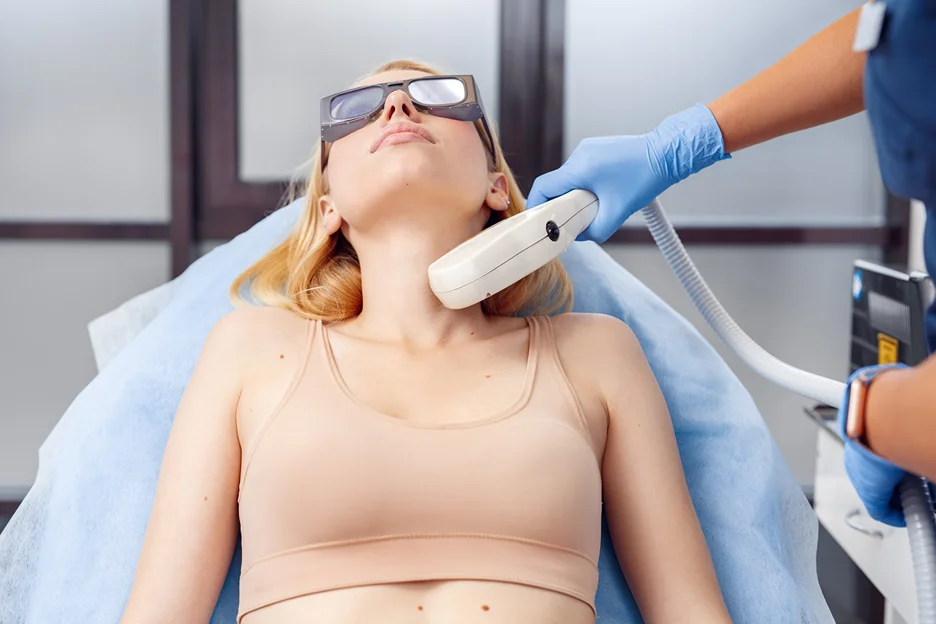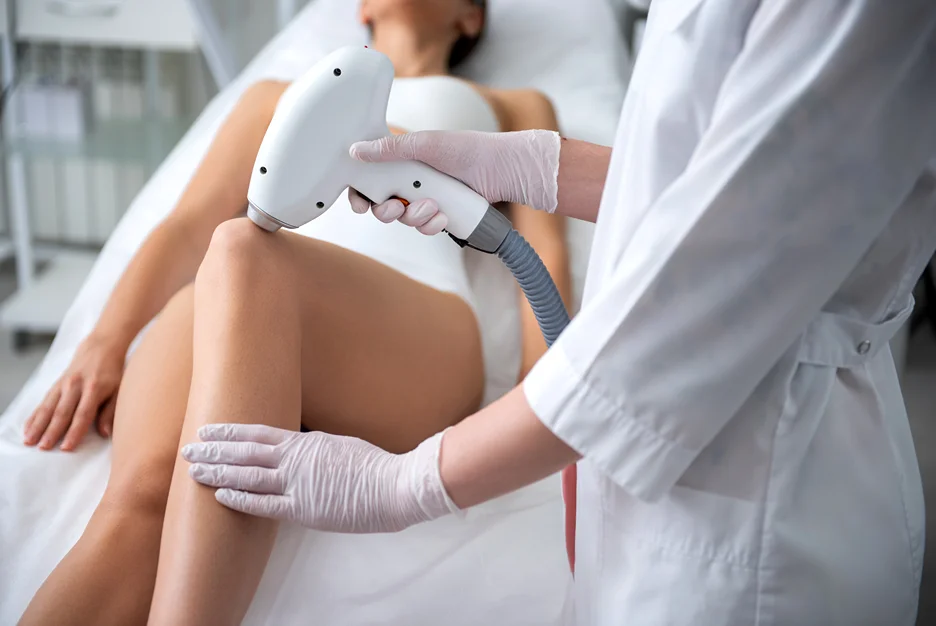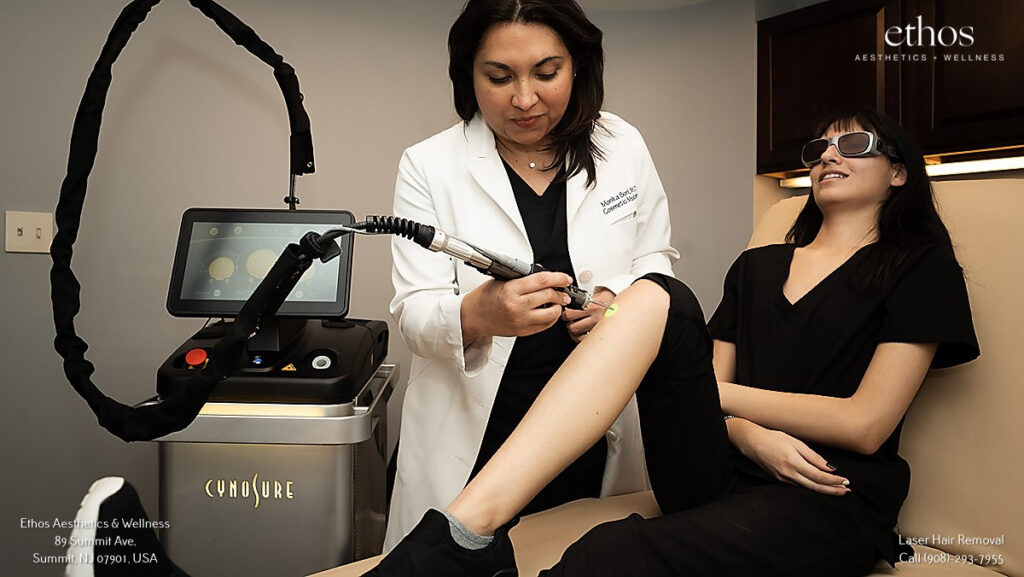Frustrated with minimal shedding weeks after laser treatment? Discover techniques to gently expedite the process.
Have your laser hair removal results seemed underwhelming so far, with minimal shedding to show for it weeks later?
Has the waiting game for those damaged hairs to detach left you feeling discouraged?
We understand the frustration. While dramatically speeding up shedding isn’t the answer, small tweaks to your aftercare routine can help.
What are the gentlest ways to encourage the hairs along without irritation? How can you prime your skin to shed more efficiently? Read on for tips from Dr. Soni from Ethos Spa to safely maximize results post-treatment for the hair-free skin you desire.
How to Speed Up Shedding After Laser Hair Removal?

Gentle exfoliation, avoiding hair removal between treatments, following post-care instructions, and having patience will help speed up the shedding process after laser hair removal without irritating skin.
Gently Exfoliate – But Not Too Much
According to our experience, gentle exfoliation helps coax out loose hairs but harsh scrubbing can do more harm than good. “I recommend lightly exfoliating the treated area 2-3 times per week using a soft washcloth, brush, or scrub made for delicate skin,” says Dr. Soni.
“This lifts away dead skin cells and debris, allowing hairs to shed freely. But over-exfoliating can irritate skin and delay the shedding process.” Be mild and gradual with any exfoliation methods.
Leave Hairs Intact In Between Treatments
Tugging out intact hairs by the shaft through waxing, plucking, or shaving does not enhance shedding, as laser targets the follicle. Dr. Soni advises leaving hairs alone between treatments for the best results.
“Removing intact, growing hairs can disrupt the natural shedding timeline and potentially damage follicles,” he explains. However, gentle shaving solely for aesthetic reasons during the process is fine.
Follow Post-Treatment Care Steps
I provide patients with personalized aftercare instructions to support the treatment and shedding process,” says Dr. Soni.
“Following advice like avoiding sun, moisturizing daily, and using only gentle cleansers keeps skin healthy and primed for shedding. Patients who closely follow my recommended care steps see faster, smoother shedding.”
The Waiting Game
While shedding takes some patience initially, the subsequent smooth, bare skin is well worth it. Trust the gradual timeline and avoid agitating the treatment area. With careful exfoliation and adherence to aftercare, those hairs will shed to reveal your hair-free skin soon enough.
Tips for Faster Shedding:
- Gently exfoliate 2-3 times per week with a soft washcloth or scrub
- Avoid waxing, plucking, and shaving between treatments
- Closely follow your technician’s post-treatment care instructions
- Have patience through the 1-3 week shedding process
We feel your pain and provide solutions. Dr. Soni personalizes every treatment and aftercare plan to gently promote quicker shedding so you enjoy bare skin fast. Reserve your consultation today!
How Long After Laser Hair Removal Does Hair Fall Out?

Treated hairs typically start shedding 5-14 days after laser hair removal, with peak shedding around 10-14 days post-treatment, though the gradual process can take 1-3 weeks for full results.
Why Hairs Shed Gradually
Each session disables about 15% of follicles, targeting only hairs in the active growth phase. Dormant follicles remain unaffected until they reactivate. So while you may see initial shedding soon after treatment, dramatic hair loss happens slowly over time and multiple sessions. As the saying goes, “Rome wasn’t built in a day.”
No Shedding by Week 2?
If you don’t see much shedding by two weeks post-treatment, don’t panic. It may mean the laser missed some active follicles. However, attending all scheduled sessions consistently allows the laser to disable more hair with each repeated exposure. Stay the course for cumulative results.
Important Tip: Do not wax or pluck between sessions, as this damages follicles and disrupts future treatment efficacy. Allow hairs to shed naturally.
Why Does Hair Keep Growing After Laser Removal?

Hair keeps growing after laser removal because the laser only disables follicles in the active growth phase, while dormant follicles are skipped and later reactivate, requiring multiple treatments to target different hair cycles over time.
Hitting Pause: The Resting Phase
“Laser only affects follicles in the active growth phase,” explains Dr. Soni. “Those in resting and shedding modes are essentially skipped and remain unharmed during a given session.” These dormant follicles later reactivate to produce new hairs, making hair continue emerging between treatments.
Can’t Catch ‘Em All
Additionally, not every follicle gets fully disabled on the first try. “Due to natural variations, some active hair follicles survive the initial laser sessions,” says Dr. Soni. Repeated exposure is needed to repeatedly target any missed or stubborn hair-producing follicles for the best reduction.
Completion Is Key
Most patients require 6-10 laser sessions to achieve up to 90% permanent hair reduction. “People who complete all recommended treatments see much better long-term results,” advises Dr. Soni. Sticking to the schedule helps disable more follicles in each growth phase.
Tired of Spotty Hair Removal? Ethos Laser Pros Produce Steady Shedding. Take Part in the Ethos Spa Hair Removal Experience Today!







